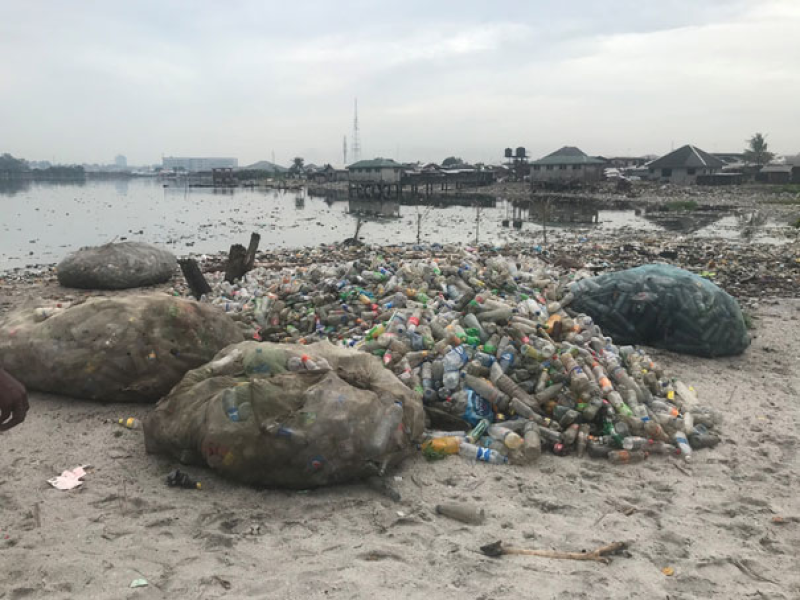- Trump considering military options on Greenland; Europe rejects |
- Fertiliser crunch threatens Kushtia’s onion boom despite high prices |
- Security Council Divided on United States' Venezuela Action |
- Over 1.53m voters register for postal balloting: Shafiqul Alam |
Clustering MEAs Can Boost Environmental Governance, Save Costs

Plastic pollution from Amadi River by Iwai-Dialax. Creative Commons Attribution-Share Alike 4.0 International
The UN80 Initiative, unveiled in March by Secretary-General António Guterres, is a system-wide effort to reaffirm the UN’s relevance in a rapidly changing world.
The initiative comes at a time of brutal budget cuts across the UN system. The United Nations High Commissioner for Refugees is cutting 3,500 jobs and reducing senior positions and offices to manage budget shortfalls. The World Health Organization is expected to cut 20–25% of its global staff. Cuts at the World Food Programme range up to 30%.
And yet, the needs served by the United Nations remain urgent. The UN appealed for US$29 billion in funding for the Global Humanitarian Overview 2025 to assist nearly 180 million vulnerable people, including refugees, in December 2024. By mid-2025, only $5.6 billion – less than 13% – had been received.
Facing this harsh fiscal environment, the Secretary-General established seven thematic clusters under the UN80 Initiative, covering peace and security, humanitarian action, development (Secretariat and UN system), human rights, training and research, and specialised agencies — to improve coordination, reduce fragmentation, and realign functions where needed.
The UN80 Task Force is scheduled to release its recommendations at the end of July.
In their timely opinion piece, “UN Reform: Is it Time to Renew the Idea of Clustering the Major Environmental Agreements?”, Felix Dodds and Chris Spence advocate for clustering key conventions and bringing scientific bodies together to strengthen international environmental governance, while also offering potential cost savings.
“Currently, there are hundreds of different multilateral environmental agreements (MEAs) in force, but perhaps only 20–30 core global MEAs with broad international participation,” Dodds and Spence write.
Bringing these fragmented environmental conventions together into clusters could strengthen their work, reduce inefficiencies, and fill gaps in how the UN addresses the triple planetary crises: biodiversity loss, climate change, and pollution.
One example of successful clustering is the 2009 creation of the Joint Convention Services of the Basel, Rotterdam, and Stockholm Conventions. This was followed by a 2010 decision by their extraordinary conferences of the parties to establish a joint secretariat.
I was hired as the first staff member assigned to serve all three conventions equally in December 2009, as Public Information Officer in the Rotterdam Convention Secretariat, while acting on behalf of the Basel, Rotterdam, and Stockholm conventions until August 2014. This gave me a ringside view of the synergies process among the three clustered conventions.
The Basel-Rotterdam-Stockholm (BRS) experience shows the benefits of joining closely related MEAs. Similar synergies could be applied to biodiversity and climate change conventions.
The synergies process streamlined implementation, reduced administrative burdens, and maximised resource use. The BRS conventions now hold back-to-back COPs on a biennial schedule. More than 180 governments attend these 'SuperCOPs’, where time, cost, and coordination are significantly optimised.
This joint approach enhances technical and scientific collaboration. For example, listing a chemical under the Stockholm Convention could trigger its classification as hazardous under the Basel Convention, affecting how plastic waste is managed. Amendments to the Basel Convention in 2019 clarified how it governs such waste.
The establishment of the BRS Secretariat also showed that party ownership is key. As independent entities, the conventions must drive reform. In 2008–2009, parties created an ad hoc joint working group to recommend administrative and programmatic coordination. This helped ensure political backing for change.
Another lesson: leadership must be unified. Initially, having multiple executives hindered progress. Consolidating the leadership structure brought coherence and cost efficiency. Staff streamlining contributed further to a leaner, more effective secretariat.
My assignment included media relations, public information, and managing the joint conventions' synergies website — a key space for coordinated outreach.
While administrative savings are meaningful, the greater gains lie in structural reform, which enhances environmental management and the restriction or elimination of hazardous substances.
Ultimately, the clustering of hazardous chemical and waste conventions offers a powerful model for advancing global environmental governance.

